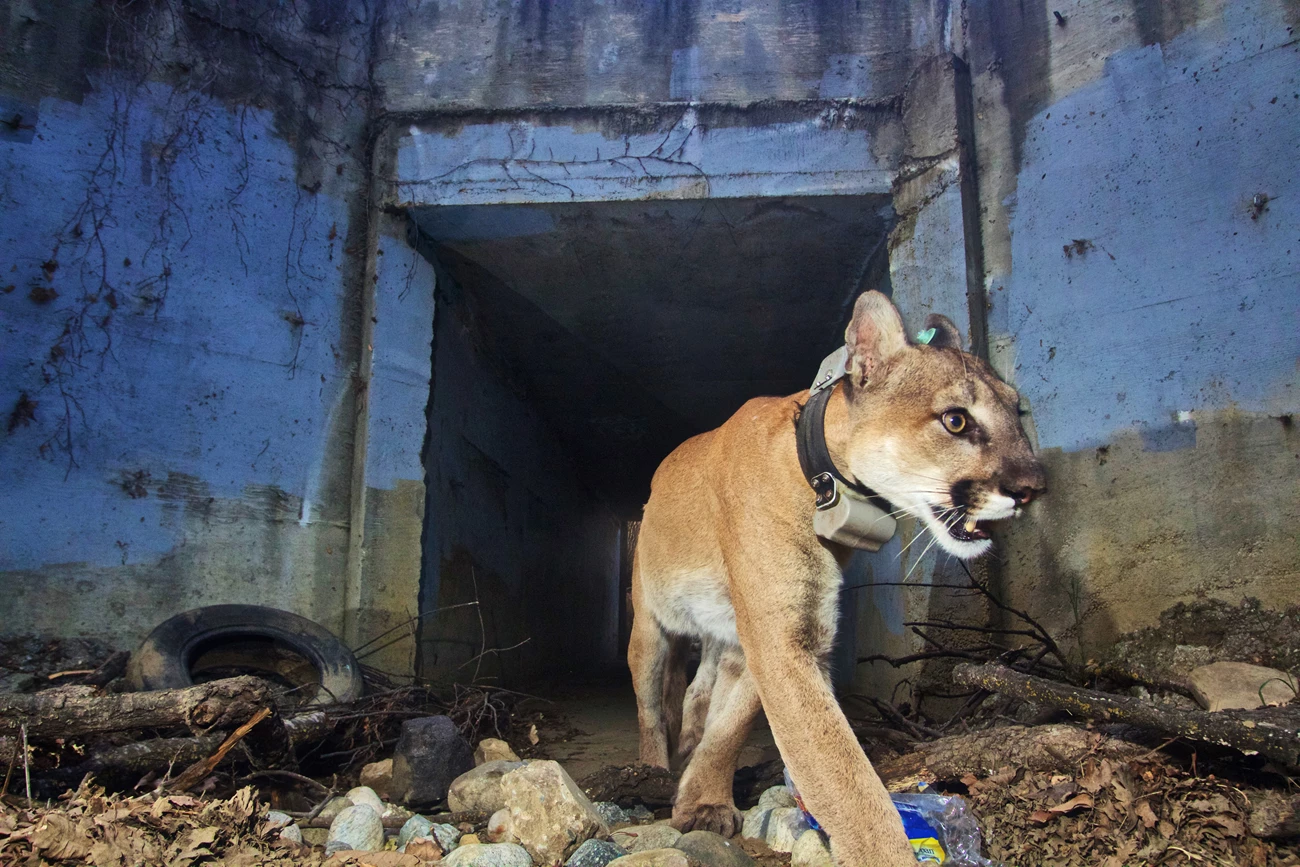Last updated: January 9, 2024
Article
A Highway Wildlife Crossing is Under Construction in the Santa Monica Mountains. How Will We Know if it’s Working?
Hollywood, beaches, and movie stars! When most people think of Los Angeles, these are some things that might come to mind. But how many people think of mountain lions!? Well, we at the National Park Service (NPS) do and we are working hard to make sure that despite living with nearly 10 million people, our mountain lions will be able to roam the hills as they have done for a very long time.
Intense urban and suburban development (think roads, highways, houses, and shopping centers) are some of the greatest challenges our mountain lions face in this urban wildland. Lions need big spaces to thrive. A single adult lion requires between 50 and 150 square miles for its home range.

NPS
The Santa Monica Mountains National Recreation Area totals almost 250 square miles, meaning that there is room for one male and maybe two females. But these individuals need access to other lion populations in southern California in order to ensure that the genetic pool gets a lot of mixing. However, highways like the 101 and 405 prohibit lions from moving in and out of the Santa Monica Mountains. So lions born within the park, which is bounded by these major travel corridors, may never be able to leave. The result is too many lions competing for limited resources and, inevitably, inbreeding, which occurs when closely related animals breed over many generations.
Currently, a new lion is lucky enough to cross the freeway and find its way into the park once every 12 years or so. Scientists estimate that number needs to be closer to one every 2-3 years otherwise the negative impacts of inbreeding will ultimately cause the population within the Santa Monica Mountain lions to collapse. The clock is ticking but scientists and managers are hopeful that this Hollywood story will have a happy ending.
The Wallis Annenberg Wildlife Crossing is currently under construction and expected to be completed by late 2025. This crossing is expected to provide lions—and many other animals—a safe passage over the busy 101 freeway. Most importantly, it will allow many species of wildlife in the Santa Monica Mountains to mix with populations from other open spaces, strengthening their genetic diversity. All Southern California mountain lions stand to benefit.
But how will we know it’s working? The Southern California Research Learning Center is funding genetic analyses that will provide a baseline of lion genetics (and other species) before the overpass is installed and will continue to support the analyses after the completion of the bridge. If the lions are using the overpass, we will see it in the genetic structure of their offspring and in the overall health of the lions improving over time.
A Publication of the Southern California Research Learning Center
The Southern California Research Learning Center is one of 18 Research Learning Centers across the country. These centers strive to increase scientific activity in the national park system, to communicate research that supports stewardship and to make science part of the visitor experience. By working with a variety of partners, we aim to support science-based decision-making, increase science literacy and promote a conservation ethic within the Santa Monica Mountains National Recreation Area, Channel Islands National Park, and Cabrillo National Monument.
